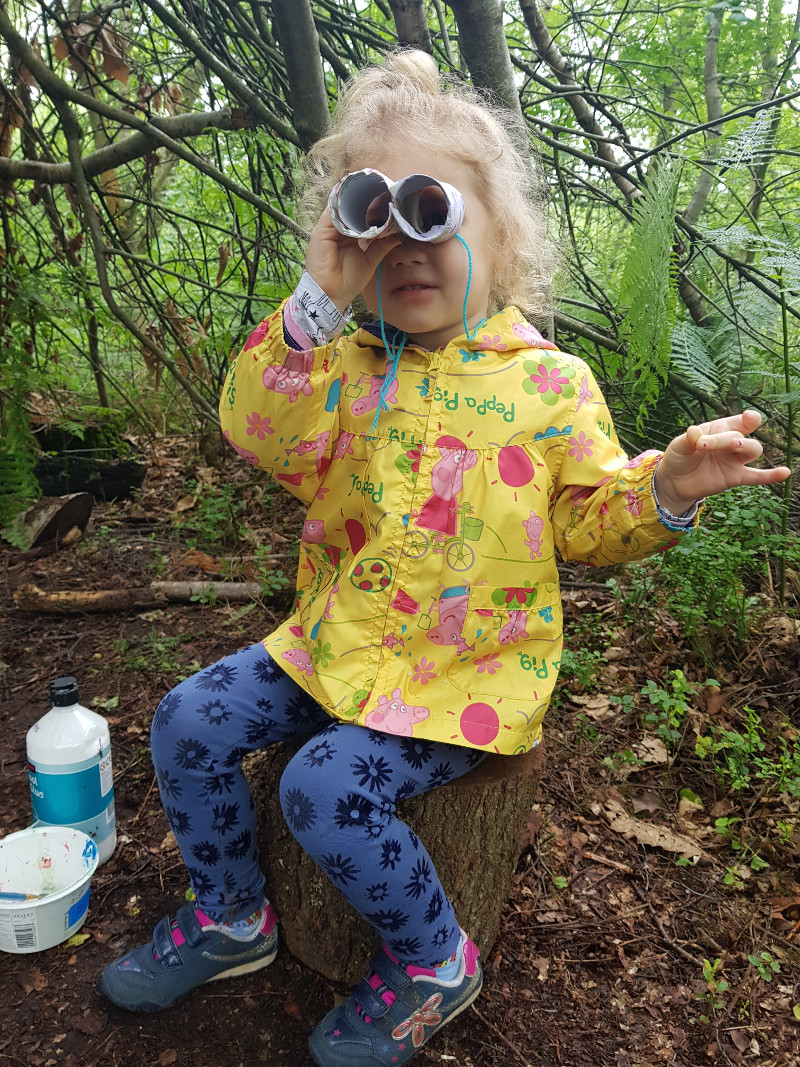Loo Roll
Loo Roll!
With TP being a precious commodity at the moment, you won't want to waste any of it. Use those cardboard inner tubes to do something creative: build a tower, make a space rocket, or, if you enjoy nature, make a pair of toy binoculars and encourage your child to see what they can spot.
First, decorate two cardboard tubes any way you like. You could use paint, crayons, stickers, or cover them in some patterned paper. Attach the two tubes side by side with a little bit of tape at either end, and there you have it!
Alternatively, tape two or three rolls end to end to make a telescope. If your child is going through a pirate phase they will love this. Make some egg box crocodiles, and build yourselves a 'pirate ship' den, either in the house with blankets and cushions, or in the garden with outdoor furniture. Who's going to walk the plank first?

Common Birds to Spot with your New Bins
Our generation weren't taught the names of different plants, trees and birds, so don't be embarrassed if you're not confident naming all the species you see in your garden. Instead, use this as an opportunity to learn along with your child.
My garden doesn't have any mature tree or shrub cover, so we don't tend to get the smaller birds, such as blue tits, great tits or sparrows, as they prefer to feed near a safe refuge place. However, our bird table does attract the larger, more confident birds, (as well as the super cocky robin). We get a lot of woodpigeons, collared doves, starlings, magpies, and the odd blackbird.
While these common or garden birds might not seem very exciting, look closer and you'll see they all behave differently. Robins will often befriend you when you're out digging, waiting for the opportunity to eat a worm that's been unearthed. Starlings move around in groups and will startle each other when they come into the feeder together. Pigeons make a comforting cooing sound.

Being a Bad Birdwatcher
Birdwatching has never been a trendy hobby, but nowadays people are starting to appreciate how just stopping, looking, and enjoying something beautiful can help us feel good. When I'm looking through my (real!) binoculars at a bird, I'm completely in that moment, focusing on that creature, mindfully meditating on it for just a few seconds.
Simon Barnes wrote a brilliant book called 'How to be a Bad Birdwatcher' in which he explains that you don't have to be an expert, have fancy equipment, or be obsessed with birds to simply enjoy them:
I once found a questionnaire in a birdwatching magazine. It asked: "How often do you go birdwatching?" I reject the question out of hand. I don't go birdwatching. I am birdwatching. Birdwatching is a state of being, not an activity. It doesn't depend on place, on equipment, on specific purpose, like, say, fishing. It is not a matter of organic trainspotting; it is about life and it is about living. It is a matter of keeping the eyes and ears and mind open. It is not a matter of obsession, not at all. It is just quiet enjoyment.
I hope you manage to find some quiet enjoyment by noticing some of the birds that share your world. To further quote Mr Barnes:
Look out of the window.
See a bird.
Enjoy it.
Congratulations. You are a bad birdwatcher.
Let me know what you and your little one spot!